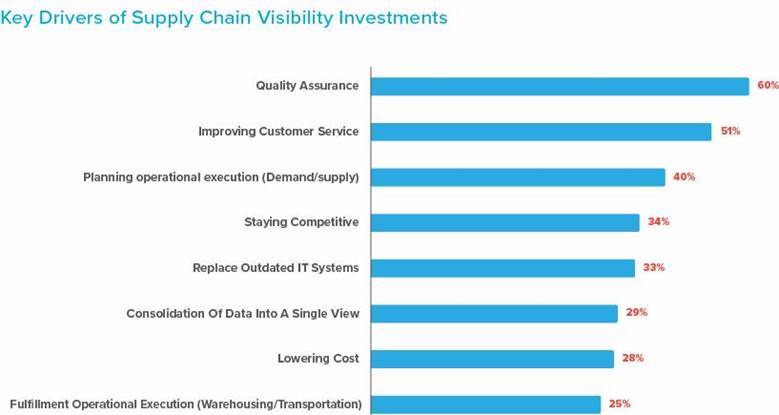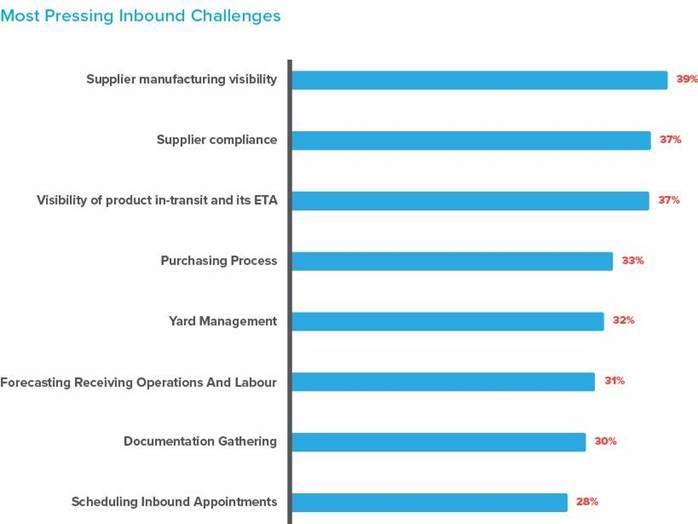While approximately half of pharmaceutical organizations have already deployed visibility technology to track raw materials and to better plan their manufacturing, many are dissatisfied with the capabilities of their current solutions. As a result, more than nine in 10 executives plan to implement a more robust digital supply chain visibility (SCV) solution over the next 12 months. That’s according to “The Pharmaceutical Supply Chain: Closing the Visibility Gap,” a new report issued today by FourKites, provider of the world’s leading real-time supply chain visibility platform, and Accenture.
Many existing visibility solutions fail to account for the unique nature of pharmaceutical supply chains, including cold chain shipping, raw material availability, security of shipments in transit, stringent temperature and quality control measures and high inventory costs. COVID-19 further highlighted the acute need for visibility at every node along the pharmaceutical supply chain. According to Supply Chain Dive, vaccine losses due to temperature excursions cost around $34.1 billion annually, while the United Nations reports that greater supply chain visibility into the cold chain could have saved 1 billion vaccines during the COVID pandemic.*
To better understand the state of the pharmaceutical supply chain, FourKites partnered with Accenture to survey supply chain executives working in pharmaceuticals, biotech, cell and gene therapy, medtech and other related industries. Among the findings, 32% of executives identified product protection and the need to quarantine as their biggest pain points in transporting and storing goods, while nearly 50% cited security and temperature reporting as the biggest issues. Beyond real-time reports for temperature and security, the survey revealed many opportunities for supply chain visibility to help improve inbound challenges and operations.
“The survey results underscore the growing importance of end-to-end supply chain visibility in the pharma space to alleviate these ongoing pain points,” said Gregory Demitrack, Life Sciences, Strategy & Consulting Manager, Accenture.

Additional Findings
60% of organizations consider quality assurance to be the key driver for enhancing security and visibility requirements, followed by 51% of companies that are focused on improving customer experience and 40% on operational execution.
When it comes to inbound supply chain challenges, 39% of respondents identified supplier manufacturing visibility as the biggest pain point, echoing the concerns of quality assurance as a key driver for innovation. Supplier compliance and product visibility and timing in transit were each highlighted as key obstacles by 37% of respondents.
“Real-time visibility is a building block for us to support a customer-centric ecosystem of health care products, supply chain solutions and adjacent services,” said Joshua Dolan, Vice President of Global Logistics at Cardinal Health. “We’re pulling together all of the components onto our platform for awareness of what’s happening, and it will unlock our supply chain to perpetually operate at the highest level. Visibility is allowing us to actually see — it’s really hard to collaborate when you can’t see what’s happening.”

As the pandemic and unprecedented disruptions continue to challenge pharma supply chains worldwide — including shortages of raw materials, changes in demand patterns and resource shortages — FourKites is helping industry leaders track critical medical supplies from origin to final destination, thereby reducing costs and ensuring compliance with essential pharma quality standards. Over the past six months, FourKites has seen a 40%+ increase in tracked shipments for pharmaceutical customers; a 20% increase in carriers serving pharma customers; and a nearly 50% increase in total miles travelled by pharma customers. One global pharmaceutical customer saved $5.5 million in detention costs and penalties alone using the FourKites platform to track its shipments. FourKites was also named a leader in CB Insights’ recent Pharmaceutical Supply Chain ESP Vendor Assessment Matrix, citing the company’s superior ability to help pharmaceutical customers keep up with changes in critical demand, mitigate disruption and protect products in transport.



